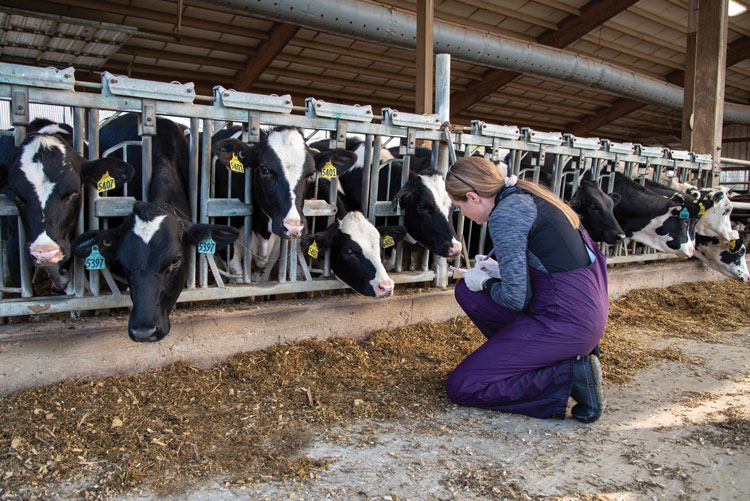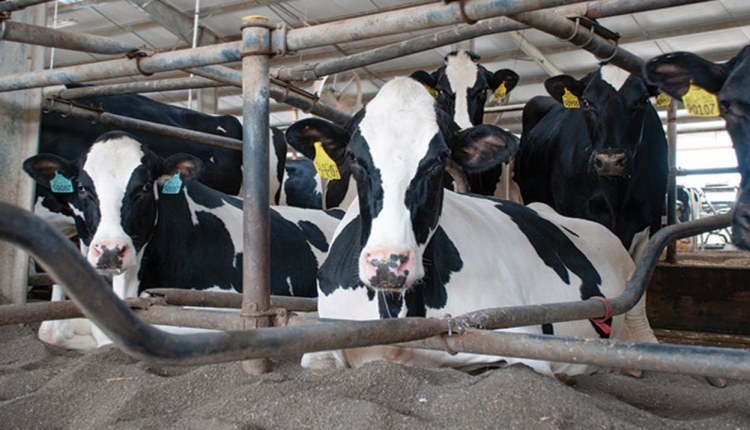The author is a farmer and veterinarian specializing in organic dairy production.

Two years ago, an antibiotic saved my life. A dog bite had, unbeknownst to me, led to a systematic infection that destroyed my heart valve, which later required open-heart surgery. For months, multiple antibiotics failed to deal with the infection, and I was barely able to walk.
It wasn’t just “antibiotics” that saved my life, but a particular antibiotic called vancomycin, which worked after multiple others had failed. I know this drug well as a dairy veterinarian because I am not allowed to use it. Vancomycin is only allowed in human medicine and in small-animal cases where the infection has documented resistance to other antibiotics. Because it can be so effective, it is protected from widespread use, especially in food-producing animals.
The next year, my father-in-law’s best friend developed such an antibiotic-resistant infection that he died. Antibiotics save lives — and remain effective on our farms — only if we guard their use.
To that end, as of June 11, 2023, all antibiotics for livestock require a prescription. The Food and Drug Administration (FDA) believes that veterinarian involvement will reduce the unnecessary use of antibiotics. What is good for society at large is also good for individual farms — repeated and sustained use of using an incorrect antibiotic can diminish overall effectiveness and lead to resistance within your own herd.
Resistance is a problem
Using antibiotics without knowing what the pathogen is or what antibiotic will be most effective is like playing darts; missing the target means losing valuable time while also spending money needlessly. It also breeds resistance. Alexander Fleming, who discovered penicillin, said it is “not difficult to make microbes resistant to penicillin in the laboratory by exposing them to concentrations not sufficient to kill them” and described the same in the body.
We often reflexively reach for an antibiotic when it may not be the right one or even truly needed. When is the last time you ran milk cultures to see what your cows need at dry-off? The table shows the results of DHIA data presented at the 2016 World Buiatrics Congress comparing matched pairs of conventional and organic farms. National Animal Health Monitoring System (NAHMS) data shows that 90% of conventional farms use antibiotics at dry-off. USDA certified organic farms cannot. Looking at fresh cows less than 40 days in milk, there wasn’t any statistical difference in somatic cell count (SCC) between the two farm types. The data suggests that there are methods other than antibiotics to dry off cows.
In cases of pneumonia, metritis, and foot rot, ceftiofur can work really well. Unfortunately, after being FDA-approved in the 1990s, ceftiofur has lost some of its “punch” against pneumonia, likely due to widespread use because of its original zero milk and zero meat withholding times.
Additionally, some germs have natural defenses that won’t be killed, even in the presence of a correctly selected antibiotic. These will reproduce, and newly minted bugs won’t be killed by the same antibiotic they were exposed to previously. Pneumonia (shipping fever) is a life and death situation, and thankfully newer more powerful antibiotics — if given early enough — will often resolve an otherwise fatal case. However, the history of treatment failures as well as basic biology suggest that we will again find ourselves with resistant bacteria at some point.
Perhaps nowhere are resistant bacteria more challenging on a dairy farm than in the udder. Even when the right antibiotic is identified, what is shown to work in the lab may not work within the living animal due to host-pathogen interactions. Additionally, depending on the milk volume being produced in the udder, a tube of antibiotics can get very diluted and be present below the threshold of effectiveness. Clearly, there is a place for nonantibiotic treatment of mastitis on dairy farms, and historical treatments may provide a way forward in preventing resistant infections.

The immune system is key
While the discovery of antibiotics was indeed revolutionary, not all infections ended in death prior to antibiotics — otherwise, none of us would be here. The immune system is truly the key to cure. A correctly prescribed antibiotic essentially buys time for the immune system to rally and re-establish internal equilibrium. Yet, it’s still the immune system that ultimately returns the cow to health.
In the mid-1880s, Robert Koch and Louis Pasteur identified specific bacteria that caused infection and the body’s response to conquer the challenge. Treatment with biologics soon started. Biologics work by stimulating the animal’s immune system through vaccination or by providing it with immediately usable preformed antibodies.
Many common diseases were successfully treated with preformed antibodies, among them being shipping fever and calf scours. As a practitioner, I’ve successfully treated numerous cases of hot coliform mastitis, pneumonia, and salmonella using injectable antibodies and nonspecific immune stimulation.
Consider other options
Autogenous bacterins (custom vaccines) were also used. Autogenous bacterins make sense since bacteria are harvested from active infection within a specific herd, then purified and potentized to stimulate the immune system to overcome the challenge. Using autogenous bacterins, I’ve seen a dramatic reduction of Staph. aureus in herds without making any other changes. Vaccinate calves at 6 months, 1 year, right before calving, and annually from then on. Your veterinarian needs to be involved per USDA rules.
Plant-derived medicines were also widely used to treat mastitis. In addition to bacterins, Haver-Glover Laboratories manufactured and sold H-G Intramammary Disinfectant, a mixture that included thymol and oregano. Thymol and oregano have proven antibacterial properties.
Plant-based medicines and biologics have provided mainstream veterinary medicine many answers to infectious-disease processes. Plant medicines have the added benefit of not being susceptible to resistance because they contain thousands of individual compounds that defy microbes’ ability to adapt.
Antibiotics, when used strategically, can aid dairy farmers long-term with judicious use. It’s also fair to say, though, that there are successful and historically proven methods of treating common dairy cow problems without antibiotics. Always consult with your local veterinarian to optimize the well-being of your animals.








